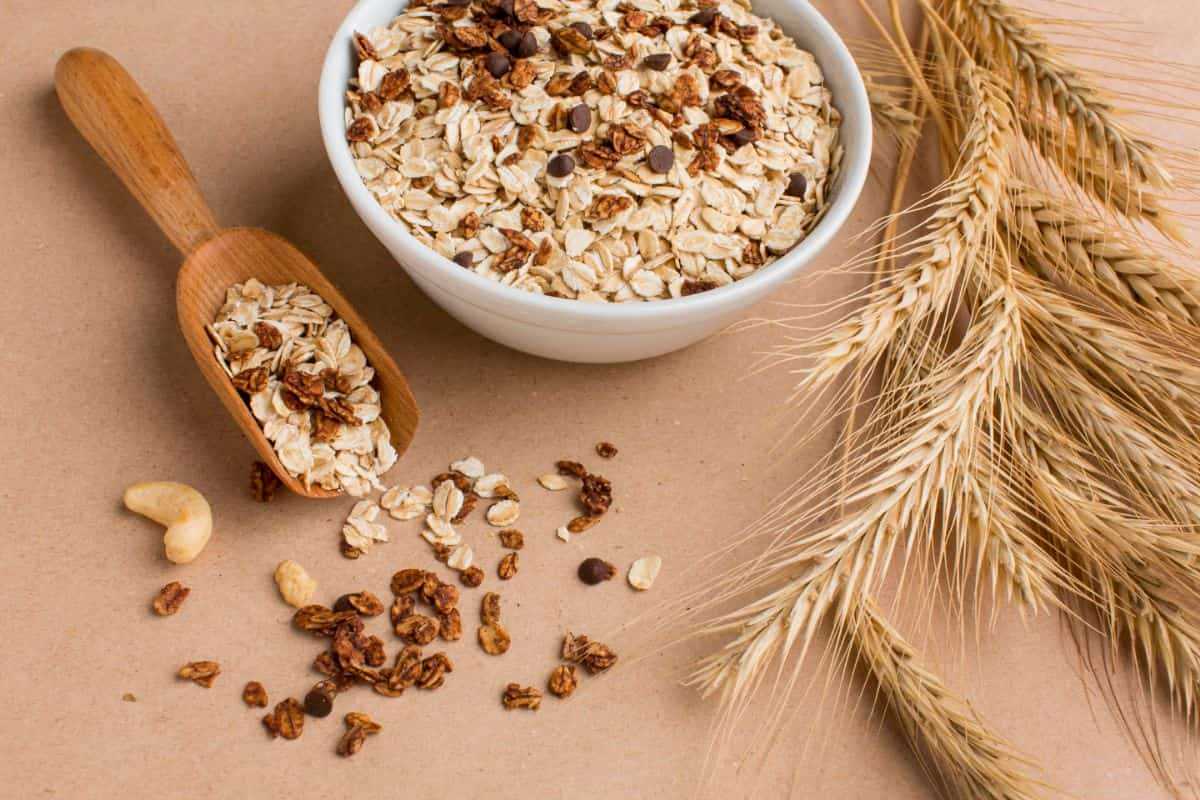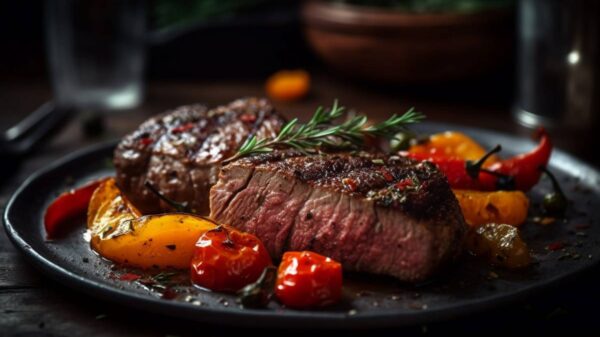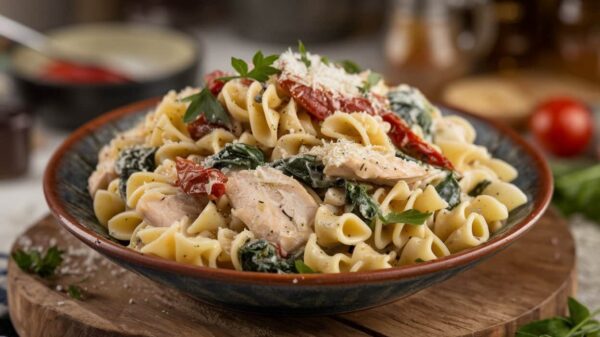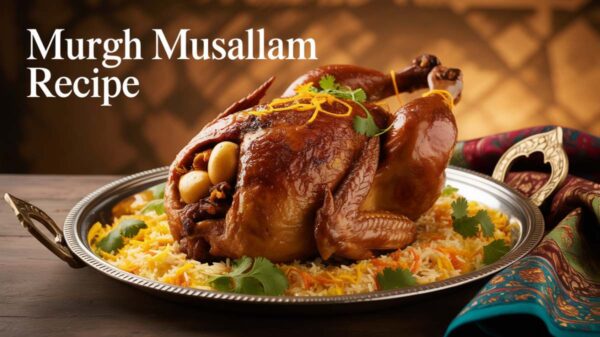Ancient grains have become a key component of healthier eating in recent years. This revival is not merely a trend but a testament to the enduring value of these time-honored grains. As health-conscious consumers seek more nutritious options, ancient grains have found their way into various products, especially cereals. This article delves into ancient grains, exploring their nutritional benefits, their role in modern cereals, and practical tips for Including them in your diet.
What Are Ancient Grains?
Ancient grains are cereals cultivated and consumed for thousands of years. Unlike modern grains, which have been significantly altered through selective breeding and genetic modification, ancient grains have remained relatively unchanged. Their cultivation dates back to early agricultural societies, and they have played a vital role in the diets of civilizations such as the Egyptians, Greeks, and Incas.
Nutritional Benefits of Ancient Grains
Ancient grains offer various nutritional benefits that contribute to overall health and wellness. Cherished for their rich history and nutritional profiles, these grains provide numerous advantages when included in a balanced diet.
High Protein Content
Ancient grains are often distinguished by their high protein content, crucial for various bodily functions, including muscle repair, immune support, and overall health. Quinoa, for instance, is particularly notable for being a complete protein source. It contains all nine crucial amino acids the body cannot produce alone, making it a valuable addition to vegetarian and vegan diets. Similarly, amaranth is another grain with a high protein content. It provides a substantial amount of protein and includes lysine, an essential amino acid frequently deficient in other grains. This makes amaranth an excellent alternative for those seeking diverse protein sources.
Rich in Fiber
Fiber is vital for maintaining digestive health, regulating blood sugar levels, and promoting satiety. Ancient grains generally offer a higher fiber content compared to many modern grains. For example, farro is renowned for its significant fiber content, which supports healthy digestion by encouraging regular bowel movements. It also contributes to a feeling of fullness, which can help manage weight by reducing overall calorie intake. Spelt, another ancient grain, also provides ample dietary fiber. This fiber supports digestive health and helps maintain steady blood sugar levels, enhancing its role in a balanced diet.
Essential Vitamins and Minerals
Ancient grains are rich in essential vitamins & minerals that support various bodily functions. Quinoa, for example, is an excellent source of magnesium, phosphorus, and manganese. These minerals are crucial in bone health, energy production, and antioxidant protection. Teff, a grain native to Ethiopia, is high in calcium, iron, and potassium. Calcium is essential for bone strength, iron supports blood health, and potassium helps regulate blood pressure. Spelt provides a range of B vitamins, including niacin, riboflavin, and thiamine, essential for energy metabolism and overall health.
Low Glycemic Index
The glycemic index (GI) measures how quickly a food raises blood sugar levels. Ancient grains typically have a lower GI than cleaned grains, which means they cause a slower and more gradual increase in blood sugar. This quality benefits people managing diabetes or insulin resistance, as it helps maintain stable glucose levels. Foods with a lower GI, such as those made from ancient grains, are also digested more slowly, which aids in controlling appetite and promoting a sense of fullness.
Antioxidants
Ancient grains often contain antioxidants, which help protect the body from oxidative stress and inflammation. For example, buckwheat is rich in antioxidants such as rutin. Rutin helps protect cells from damage caused by free radicals and supports cardiovascular health. Farro also contains various antioxidants that contribute to overall health & may decrease the risk of chronic diseases by combating oxidative damage.
Gluten-Free Options
Many ancient grains are organic gluten-free, making them suitable for people with celiac disease or gluten sensitivities. Quinoa, for instance, is a versatile gluten-free grain that can be used in various dishes. Amaranth is another gluten-free option that offers a nutritious alternative for those avoiding gluten. Gluten-free ancient grains provide valuable options for those with dietary restrictions, ensuring they can still enjoy a wide range of healthy foods.
Heart Health
The nutritional profile of ancient grains supports heart health through several mechanisms. The high fiber content in grains like barley and spelled helps lower cholesterol levels, reducing the risk of heart disease. Additionally, the antioxidants in many ancient grains help prevent oxidative damage to blood vessels, supporting overall cardiovascular health.
Bone Health
Ancient grains contribute to bone health through their content of essential nutrients. Teff’s calcium is crucial for maintaining strong bones and teeth. Quinoa’s abundant magnesium supports bone density and overall skeletal health. Combining these nutrients helps promote bone strength and reduce the risk of bone-related conditions.
Versatility in Diet
Ancient grains are nutritious and highly versatile, making them easy to incorporate into various meals. They can be used in breakfast dishes such as porridge or smoothies and serve as a hearty base for lunch and dinner options. Ancient grains can also be used in baking, providing a nutritious boost to bread, muffins, and granola bars. Their adaptability in culinary applications makes them a convenient and healthful addition to various recipes.
What are the 12 ancient grains?
Here are 12 ancient grains, each with a unique history and nutritional profile:
1. Quinoa (Chenopodium quinoa)
Quinoa is a highly nutritious grain originating in the Andean region of South America. Often regarded as a “superfood,” quinoa stands out for its impressive protein profile. It is one of the few plant-based sources of complete protein, containing all nine essential amino acids our bodies cannot produce. It is, therefore, the perfect diet for vegans and vegetarians. Furthermore, quinoa has a high dietary fiber content, which promotes healthy digestion and keeps one feeling full. It also offers vital minerals and vitamins, including magnesium, phosphorus, and manganese, contributing to bone health, energy production, and antioxidant protection.
2. Farro (Triticum spp.)
Farro, an ancient wheat variety, has been grown for thousands of years in the Mediterranean region. Farro, prized for its chewy texture and nutty flavor, gives a substantial depth to various recipes. It has a high protein and dietary fiber content, aiding muscle repair, digestion, and satiety. Farro also provides a range of essential nutrients, including B vitamins, crucial for energy metabolism, and magnesium, which supports cardiovascular health. Its versatility allows it to be used in salads, soups, and grain bowls, making it a valuable addition to a balanced diet.
3. Amaranth (Amaranthus spp.)
Amaranth is an ancient grain with roots in the diets of the Aztecs and other pre-Columbian civilizations. This tiny grain is notable for its high protein content, comprising all nine essential amino acids, making it a complete protein source. Amaranth is also rich in iron, calcium & potassium, which support various bodily functions, such as oxygen transport, bone health, and fluid balance. Its gluten-free nature makes it a suitable option for those with celiac disease or gluten sensitivity. Amaranth’s versatility allows it to be used in hot cereals, soups, and baked goods.
4. Spelt (Triticum spelta)
Spelt, an ancient form of wheat, has been cultivated for over 5,000 years. It is known for its slightly sweet, nutty flavor and chewy texture. Spelt is high in dietary fiber, which promotes digestive health & helps regulate blood sugar levels. It also provides essential nutrients like protein, B vitamins (including niacin, riboflavin, and thiamine), and minerals like zinc and magnesium. These nutrients support energy production, immune function, and bone health. Spelt can be used in various dishes, including bread, pasta, and cereals.
5. Millet (Panicum miliaceum)
Millet is a small, round grain that has been a staple in Africa and Asia for thousands of years. It is known for its mild flavor and fluffy texture when cooked. Millet is rich in protein, making it a valuable addition to plant-based diets. It also provides dietary fiber, which supports digestion and helps maintain a feeling of fullness. In millet, essential minerals such as magnesium, phosphorus, and manganese contribute to bone health, energy production, and antioxidant protection. Millet’s versatility allows it to be used in porridge, pilafs, and as a base for various dishes.
6. Teff (Eragrostis tef)
Teff is a tiny grain native to Ethiopia and is integral to traditional Ethiopian cuisine, particularly in making fermented flatbread injera. Despite its small size, teff is highly nutritious, offering a high protein, calcium, and iron content. It is naturally gluten-free, making it suitable for those with celiac disease or gluten intolerance. Teff also provides potassium and zinc, essential for fluid balance and immune function. Its versatility allows it to be used in porridge, baking, and as a base for various recipes.
7. Buckwheat (Fagopyrum esculentum)
Buckwheat is an ancient grain that, despite its name, is not related to wheat & is naturally gluten-free. It is known for its high-quality protein and antioxidant content. Buckwheat contains rutin, an antioxidant that helps protect cells from oxidative damage & supports cardiovascular health. It is abundant in B vitamins, magnesium, and fiber, contributing to energy metabolism, muscle function, and digestive health. Buckwheat can be used in various dishes, including pancakes, noodles, and salads.
8. Barley (Hordeum vulgare)
Barley is one of the most excellent cultivated grains, with a history that spans thousands of years. It is valued for its high fiber content, which supports digestive health by promoting regular bowel movements & lowering cholesterol levels. Barley also provides essential vitamins & minerals, including B vitamins, selenium, and iron. These nutrients support energy production, immune function, and overall health. Barley is versatile in cooking and can be used in soups, stews, salads & as a base for various grain dishes.
9. Kamut (Triticum turgidum)
Kamut, also known as Khorasan wheat, is an ancient grain with roots dating back to ancient Egypt. It contains protein, fiber, and essential minerals like zinc and magnesium. Kamut has a slightly sweet, nutty flavor and a chewy texture that enhances various dishes. Its nutrient profile supports muscle health, digestive function, and overall well-being. In multiple recipes, kamut can be used as a grain base in salads and soups.
10. Freekeh (Triticum turgidum)
Freekeh, or farik, is an ancient grain harvested from green durum wheat. It has been a staple in Middle Eastern diets for centuries. Freekeh is high in protein, fiber, and essential nutrients such as iron and magnesium. It has a distinctive smoky flavor and chewy texture, adding depth to dishes. Freekeh is commonly used in salads, pilafs, and soups, offering a nutritious and flavorful addition to meals.
11. Rye (Secale cereale)
Rye is an ancient grain whose cultivation history dates back to the Middle Ages. It is known for its slightly sour flavor and dense texture. Rye is rich in dietary fiber, which supports digestive health and helps regulate blood sugar levels. It also provides essential nutrients, including B vitamins, which are important for energy metabolism, and minerals such as manganese and phosphorus. Rye is commonly used in bread and baked goods, adding a unique flavor and texture.
12. Einkorn (Triticum monococcum)
Einkorn is one of the earliest forms of cultivated wheat, with a history extending over 10,000 years. It has a rich, nutty flavor and is higher in protein and essential fatty acids than modern wheat varieties. Einkorn is also a good source of vitamins and minerals, including B vitamins and iron. Its nutrient-dense profile makes it a valuable addition to a balanced diet. Einkorn can be used in various dishes, including bread, pasta, and baked goods.
Ancient Grains Are More Sustainable Grains
- Resource Efficiency: Ancient grains like quinoa and teff require less water and fewer synthetic inputs than modern crops, making them more sustainable.
- Climate Adaptability: These grains are adaptable to diverse climates, reducing the need for broad irrigation and chemical fertilizers, which helps conserve natural resources.
- Soil Health: Their lower fertilizer needs contribute to improved soil health and reduce environmental impact, supporting long-term agricultural sustainability.
- Biodiversity Support: Cultivating ancient grains supports biodiversity by preserving traditional agricultural practices and encouraging diverse farming methods.
- Carbon Footprint Reduction: Ancient grains have a lower carbon footprint than industrial farming practices, helping mitigate climate change.
- Environmental Stewardship: Choosing ancient grains promotes sustainable agricultural practices and environmental stewardship, making them a responsible food choice.
- Healthy Cereal Option: Incorporating an ancient grain in a healthy cereal nyt provides a nutritious and eco-friendly option that supports personal and environmental well-being.
Market Trends and Consumer Preferences for Ancient Grains
Ancient grains are experiencing a resurgence in popularity as consumers increasingly seek healthier and more diverse food options. Several key market trends and evolving consumer preferences drive this renewed interest. Here’s an in-depth look at these factors:
Growing Health Consciousness
Consumers are becoming more health-conscious, actively seeking foods that offer nutritional benefits & support overall well-being. Ancient grains are often perceived as healthier alternatives to refined grains due to their higher protein content, fiber, and essential nutrients. This shift towards more nutritious eating habits is fueling demand for ancient grains as they are seen as a natural choice for improving diet quality.
Increased Awareness of Gluten Sensitivity
There is a growing awareness of gluten sensitivities and celiac disease among consumers. Ancient grains like quinoa, amaranth, and teff are naturally gluten-free, making them popular for individuals with gluten intolerance or those following a gluten-free diet. This awareness influences product development and marketing strategies, leading to a broader range of gluten-free options in the market.
Interest in Plant-Based Diets
The rise of plant-based diets is another significant trend impacting the ancient grain market. Many ancient grains are excellent plant-based protein sources, making them appealing to vegetarians and vegans. Their versatility allows them to be used in a variety of plant-based recipes, from salads and soups to grain bowls and baking.
Sustainability and Ethical Eating
Sustainability is becoming a key consideration for consumers when choosing food products. Ancient grains are often considered more environmentally friendly than conventional crops due to their lower water requirements and ability to grow in diverse climates. Consumers are increasingly drawn to foods that align with their sustainability and ethical eating values, which drives interest in ancient grains.
Exploration of Global Flavors
As consumers become more adventurous in their culinary choices, they are increasingly interested in exploring global flavors and ingredients. Ancient grains such as teff, amaranth, and freekeh are integral to traditional cuisines worldwide. This curiosity about international flavors increases ancient grains’ inclusion in mainstream food products and recipes.
How to Incorporate Ancient Grain Cereal into Your Diet
Ancient grain cereals are a nutritious addition to a balanced diet. Rich in protein, fiber, and essential nutrients, they offer a variety of health benefits. Integrating these grains into your meals can be both delicious and beneficial. Here’s how you can effortlessly include ancient grain cereal in your daily routine:
Breakfast Boost
Start your day with a nutritious breakfast featuring ancient grains. You can prepare traditional cereal by cooking grains like quinoa or farro according to package instructions. Serve them with milk or a dairy-free alternative, and add fresh fruit, nuts, and a touch of honey or maple syrup. This breakfast option provides sustained energy and essential nutrients.
For a more convenient option, consider making overnight oats. Combine rolled oats with cooked ancient grains such as amaranth or quinoa, chia seeds, and your choice of milk. Add fruits, nuts, and a sweetener if desired. Let the mixture sit in the refrigerator overnight, offering your day a quick and nutritious start.
Lunch Enhancer
Ancient grains can enhance your lunch by adding nutrition and texture to salads. Cook excellent grains like farro, barley, or freekeh, and mix them with chopped vegetables, legumes, and a light vinaigrette. For added protein, include grilled chicken, tofu, or feta cheese. This creates a balanced and filling salad.
Alternatively, ancient grains can be used as a base for grain bowls. They can be topped with a variety of vegetables, protein sources, and a flavorful sauce or dressing. This customizable meal can cater to different tastes and dietary preferences.
Dinner Delight
Incorporate ancient grains into dinner by adding them to soups and stews. Grains like barley or spelled can be added to these dishes to boost their nutritional profile and provide a satisfying, chewy texture.
You can also use ancient grains as side dishes. Prepare quinoa or wild rice with herbs and spices, or make a pilaf with freekeh and vegetables. These sides offer a nutritious alternative to traditional grains like white rice.
Snack Time
Try making homemade granola with ancient grains such as quinoa or millet for a healthy snack. Combine these grains with nuts, seeds, and dried fruit, then bake until crispy. This provides a crunchy and nutritious snack that can be enjoyed alone or as a topping for yogurt.
Energy bars are another great option. Incorporate ancient grains into homemade bars or bites, using ingredients like cooked amaranth or buckwheat, nuts, seeds, and dried fruit. These bars offer a convenient and portable snack with sustained energy.
Baking
Ancient grains can also be used in baking to enhance the nutritional value of your favorite recipes. Substitute part of the flour in muffins or bread recipes with grains like spelled or einkorn. This adds both flavor and nutrients to your baked goods.
Try incorporating ancient grains into the batter for breakfast favorites like pancakes and waffles. Using quinoa flour or amaranth flour instead of some of the regular flour will enrich the nutritional profile of these dishes.
Global Cuisine Exploration
Ancient grains lend themselves well to traditional dishes from various cultures. For example, teff can make injera, a traditional Ethiopian flatbread, while bulgur can be included in Middle Eastern tabbouleh. Experimenting with ancient grains in these recipes introduces diverse flavors and culinary traditions.
Another exciting option is to use ancient grains in risotto. Substitute traditional rice with grains like farro or barley and cook them with broth, vegetables, and a splash of wine. This adds a unique flavor and texture to the dish while boosting its nutritional content.
Cooking Tips and Considerations
When preparing ancient grains, it’s important to rinse them before cooking to remove any residual saponins or impurities. Follow package instructions for cooking times and methods, as they can vary between grains. Store cooked grains in the refrigerator for up to a week or freeze them for longer-term use.
Ancient grains pair well with various herbs, spices, and sauces, so feel free to experiment with different combinations to find what you enjoy most. Combine them with vegetables, lean proteins, and healthy fats to create well-rounded and balanced meals.
Health Benefits of Ancient Grains in Cereals
Ancient grains are increasingly featured in breakfast cereals due to their exceptional health benefits. Rich in essential nutrients, they provide various advantages that enhance overall well-being.
Enhanced Nutritional Profile
Ancient grains like quinoa, amaranth, and teff offer a superior nutritional profile to modern refined grains. They are high in protein, fiber, essential vitamins, and minerals like iron and magnesium. Quinoa, for instance, provides complete protein, supporting various bodily functions. This nutrient density makes ancient grains a valuable addition to cereals, enhancing their health benefits.
Support for Digestive Health
The high fiber content in ancient grains supports digestive health by adding bulk to the stool and promoting regular bowel movements. Fiber also acts as a prebiotic, feeding beneficial gut bacteria, which is essential for a healthy microbiome. When included in cereals, this can improve overall digestive function and reduce the risk of gastrointestinal issues.
Better Weight Management
Ancient grains can aid in weight management by increasing feelings of fullness. Their fiber and protein content help control appetite and reduce overall calorie intake. Many ancient grains also have a low glycemic index, which helps continue stable blood sugar levels & prevents energy crashes, contributing to effective weight management.
Heart Health Benefits
Ancient grains contribute to heart health by helping to lower LDL (harmful) cholesterol levels due to their fiber content. They also contain antioxidants & anti-inflammatory compounds that combat oxidative stress and inflammation. When included in cereals, this combination supports cardiovascular health & reduces the risk of heart disease.
Gluten-Free Options
Many ancient grains, such as quinoa and amaranth, are naturally gluten-free. This makes them appropriate for individuals with celiac disease or gluten sensitivity. Gluten-free ancient grain cereals offer a nutritious alternative to conventional cereals, ensuring that those with dietary restrictions can enjoy a healthy breakfast.
Sustainable and Ethical Eating
Ancient grains are often grown with fewer resources, making them a more sustainable choice. They generally require less water and can be cultivated in various climates. Choosing ancient grain cereals supports environmentally friendly farming practices and helps preserve agricultural biodiversity.
The Future of Ancient Grains
The future of ancient grains looks increasingly promising as they gain traction for their health benefits and sustainability. Several key factors are driving their anticipated growth:
- Rising Demand for Nutrient-Rich Foods: As consumers become more health-conscious, the demand for nutrient-dense foods like ancient grains is expected to increase significantly due to their rich nutrient profiles and multiple health benefits.
- Growth of Plant-Based Diets: Ancient grains provide essential protein and a variety of highly beneficial nutrients for those adhering to plant-based or flexitarian diets, making them a preferred choice in contemporary dietary trends.
- Advancements in Agricultural Practices: Innovations in farming techniques and research are anticipated to enhance the cultivation and processing of ancient grains, improving their resilience to climate change and making them more accessible and affordable for a broader audience.
- Exploration of Lesser-Known Varieties: With ongoing research and marketing efforts, many lesser-known ancient grain varieties are expected to be introduced to Western markets, broadening their appeal and availability.
- Sustainability Focus: Ancient grains are well-aligned with the growing emphasis on sustainable agriculture, contributing to more environmentally friendly and diverse farming practices, which is crucial for addressing global environmental challenges.
Conclusion
Ancient grains are experiencing a resurgence in popularity due to their exceptional nutritional benefits and sustainability. Their rich history and versatility make them valuable additions to modern diets, particularly in cereals. These grains, high in protein, fiber, vitamins, and minerals, support digestive health, heart health, and weight management. Ancient grains like quinoa, amaranth, and teff are becoming essential components in health-conscious and gluten-free diets, offering alternatives for those with dietary restrictions.
Their cultivation is more environmentally friendly, requires fewer resources, and promotes biodiversity. As consumers continue to seek nutritious, sustainable food options, ancient grains are poised to play a significant role in the future of food. Integrating these grains into daily meals offers a nutritious and sustainable way to enhance overall well-being. Including an ancient grain in a healthy cereal nyt is an excellent strategy to boost your nutritional intake while supporting environmental sustainability.
FAQs About Ancient Grain in a Healthy Cereal nyt
What is the healthiest ancient grain?
Quinoa is often considered the healthiest ancient grain due to its complete protein profile, high fiber content, and rich array of vitamins and minerals.
What is the wordle for ancient grain?
For the Wordle-style game focusing on "ancient grain," a fitting word might be "quinoa." It’s a popular ancient grain with a distinctive name that matches well with the theme.
Are ancient grains suitable for people with gluten sensitivities?
Yes, many ancient grains are naturally gluten-free, such as quinoa, amaranth, and teff. These grains provide nutritious alternatives for individuals with celiac disease or gluten sensitivity. However, it’s essential to check for cross-contamination in processed products.
How can I incorporate ancient grain cereals into my diet?
Ancient grain cereals can be added to your diet in various ways. Enjoy them as a traditional breakfast cereal with milk or dairy-free alternatives, use them in salads and grain bowls, or incorporate them into baking. They can also be used in soups, stews, and as side dishes.
Do ancient grains have any environmental benefits?
Yes, ancient grains are often more sustainable compared to modern crops. They typically require less water and fewer synthetic inputs, making them more environmentally friendly. Their adaptability to different climates and lower fertilizer needs also contribute to more sustainable farming practices.
How can I find ancient grain cereals in stores?
Ancient grain cereals are becoming more widely available in supermarkets, health food stores, and online. Look for labels that specifically mention ancient grains or check the ingredients list for grains like quinoa, farro, or spelt.
Can ancient grains be used in baking?
Yes, ancient grains can be used in baking to enhance the nutritional value of various recipes. Substitute part of the regular flour with ancient grain flours like spelt or einkorn to add flavor and nutrients to bread, muffins, and other baked goods.

















